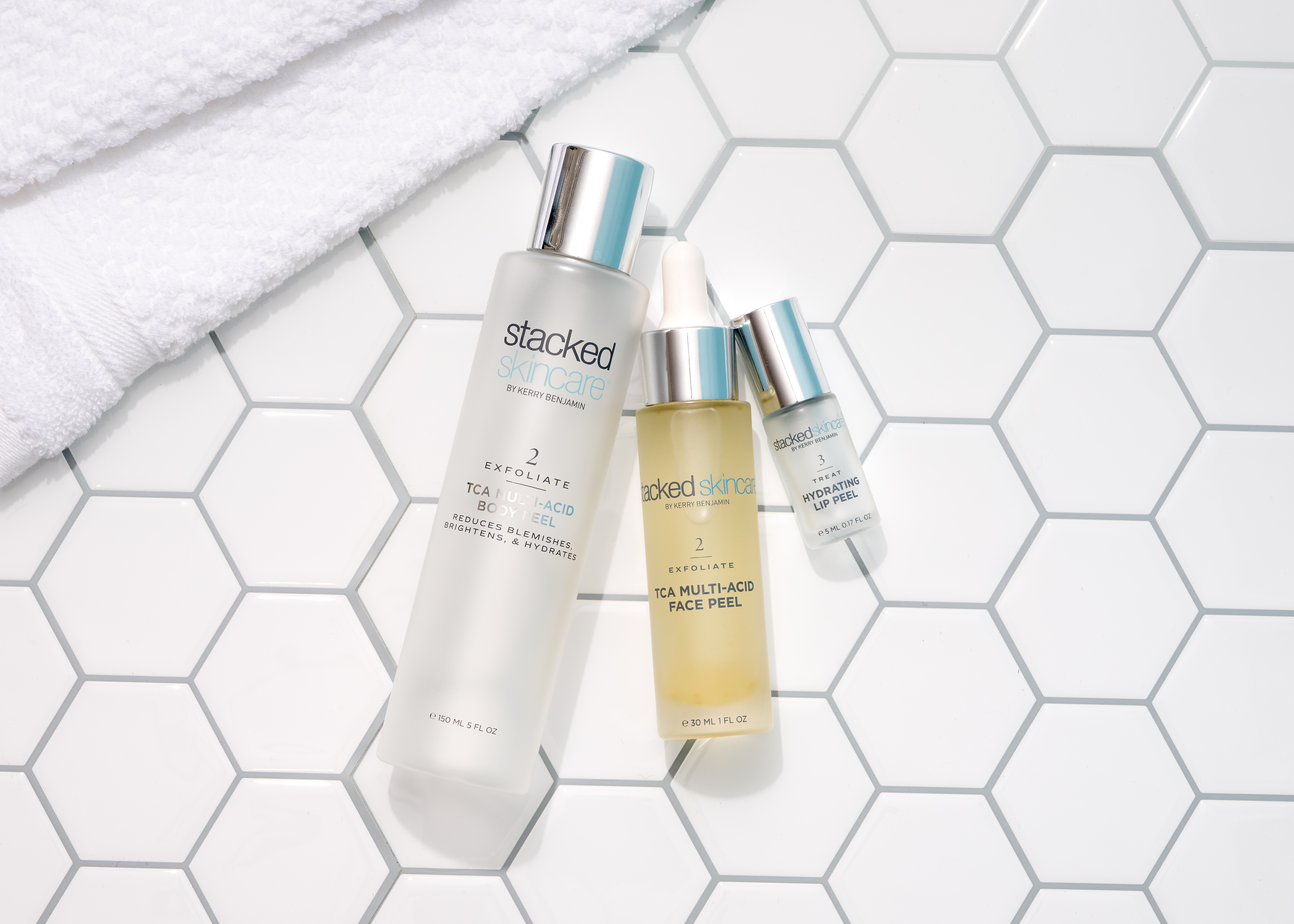Perfect Peel Guide: Part 1
Written by Kerry Benjamin

Why Peels Are Important
As we age our skin exfoliates much more slowly, meaning most of us will experience a duller, grey-toned, lifeless look to our skin. Peels keep skin looking healthy with a youthful glow while diminishing the appearance of lines and wrinkles. Peels can also help eliminate scarring, discoloration, and acne.
What is a Chemical Peel?
Chemical peeling is the application of a chemical solution to the skin to gently exfoliate dead skin cells. To learn more about how they work, head over to our guide to chemical peels.
How Strong is a Chemical Peel?
There are three types of peels: superficial, medium and deep. Each type serves a different purpose and possesses different strengths.
Superficial peels (also known as light peels) are the gentlest type of peels available. They only remove the top layer of dead skin, known as the epidermis, and can give your skin an instantly brighter look as well as a smoother, more even texture. They can be used to minimize fine lines and wrinkles, sun damage, mild acne scarring, age spots and dry or flaking skin.
Medium peels give more dramatic results than superficial peels. They penetrate deeper into the skin and can be used to treat acne, pigmentation and wrinkles. These peels are also known to stimulate collagen production to firm and tighten skin.
Deep peels are the strongest type of chemical peel available and can achieve powerful results for sun damage, scarring and deep lines and wrinkles. Each peel varies in its effects depending on the type of “peeling agent” used and the pH level.
What Kind Of Chemical Peels Are There?
When we say “chemical peels,” we broadly refer to several different types of chemical exfoliants. We’ve listed some of the most common chemical peels available. Read on to understand their uses and results.
TCA (Trichloroacetic Acid): This peel is perfect for a deep penetration into the skin. It is usually used for medium depth or deep peels when treating skin tightening, fine lines and wrinkles, acne scars, large pores, and hyperpigmentation. Our TCA Multi-Acid Peel is available for face and body, and is safe for use at home.
Jessner Peel: This peel is designed to remove superficial layers of skin, control oil production, kill acne causing bacteria, dislodge blackheads, reduce shallow wrinkling and scarring, and help lighten hyperpigmentation and melasma. The Jessner Peel improves the overall appearance and health of sun-damaged, acne prone, and aging skin.
BHA (Beta-Hydroxy Acid): A beta hydroxy acid is an organic compound similar to that of an AHA (Alpha-Hydroxy Acid), which contains a carboxylic acid functional group and hydroxy functional group separated by two carbon atoms.
- Salicylic Acid: Derived from willow tree bark, this is the most commonly known BHA. It is especially beneficial for treating acne because it is both anti-inflammatory and anti-bacterial. It also helps reduce skin thickening due to sun damage, and refines skin, which lets us then get a better delivery of other acids into the skin.
AHA (Alpha-Hydroxy Acid): Alpha hydroxy acids are a group of natural acids found in foods. These include:
-
Lactic: An alpha hydroxy acid (AHA) derived from milk. This peel is great to treat pigmentation, dry or dehydrated skin, sensitive skin, and even eczema and rosacea due to its natural moisturizing effect on this skin. It is less irritating than other AHAs.
-
Glycolic: An alpha hydroxy acid (AHA) derived from fruit and sugarcane. This peel is best for treating fine lines and wrinkles, sun damage, improvement of skin texture, and skin brightening.
-
Mandelic: An alpha hydroxy acid (AHA) derived from almonds. This is a great first-time chemical peel because it is less penetrating and irritating, but still very effective for treating damaged skin. Their antibacterial qualities also make them good for people with acne-prone skin.
-
Citric: An alpha hydroxy acid (AHA) derived from corn or sugar beets. A recommended peel used to treat acne, photo damage, and superficial pigmentation.
-
Kojic: An alpha hydroxy acid (AHA) derived from mushrooms and other fungi. This peel is beneficial to brighten skin by reducing hyperpigmentation and fine lines. It also increases collagen and elastin production.
-
Malic: An alpha hydroxy acid (AHA) derived from apples and pears. This peel is best for photoaging damage, acne, rosacea, superficial pigmentation, and eczema.
- Azelaic: An alpha hydroxy acid (AHA) derived from rye, wheat, and barley. This peel is effective in treating a number of skin conditions, such as acne, inflammation and hyperpigmentation.
PHA (Polyhydroxy Acid): This peel is ideal for very sensitive skin. Use for exfoliation, skin smoothing, and anti-aging effects.
What Else Should I Know?
Now that you’ve learned the basics of what a chemical peels and what kind of peels there are, it’s time to explore the importance of pH balance in your chemical peel. In the second part of our perfect peel guide, we explain this critical element of chemical peels.
Ready to try a chemical peel? Schedule your free consultation with us to discover how the TCA Multi-Acid Peel can transform your skincare routine.
About the Author

Kerry Benjamin, a licensed aesthetician, has over 14 years of experience. Kerry is the driving force behind StackedSkincare. As the company's CEO, Kerry has dedicated her career to revolutionizing skincare. Her innovative approach combines peels, serums, and specialized tools to effectively address a wide range of skin concerns. CA LE license number Z98459.
